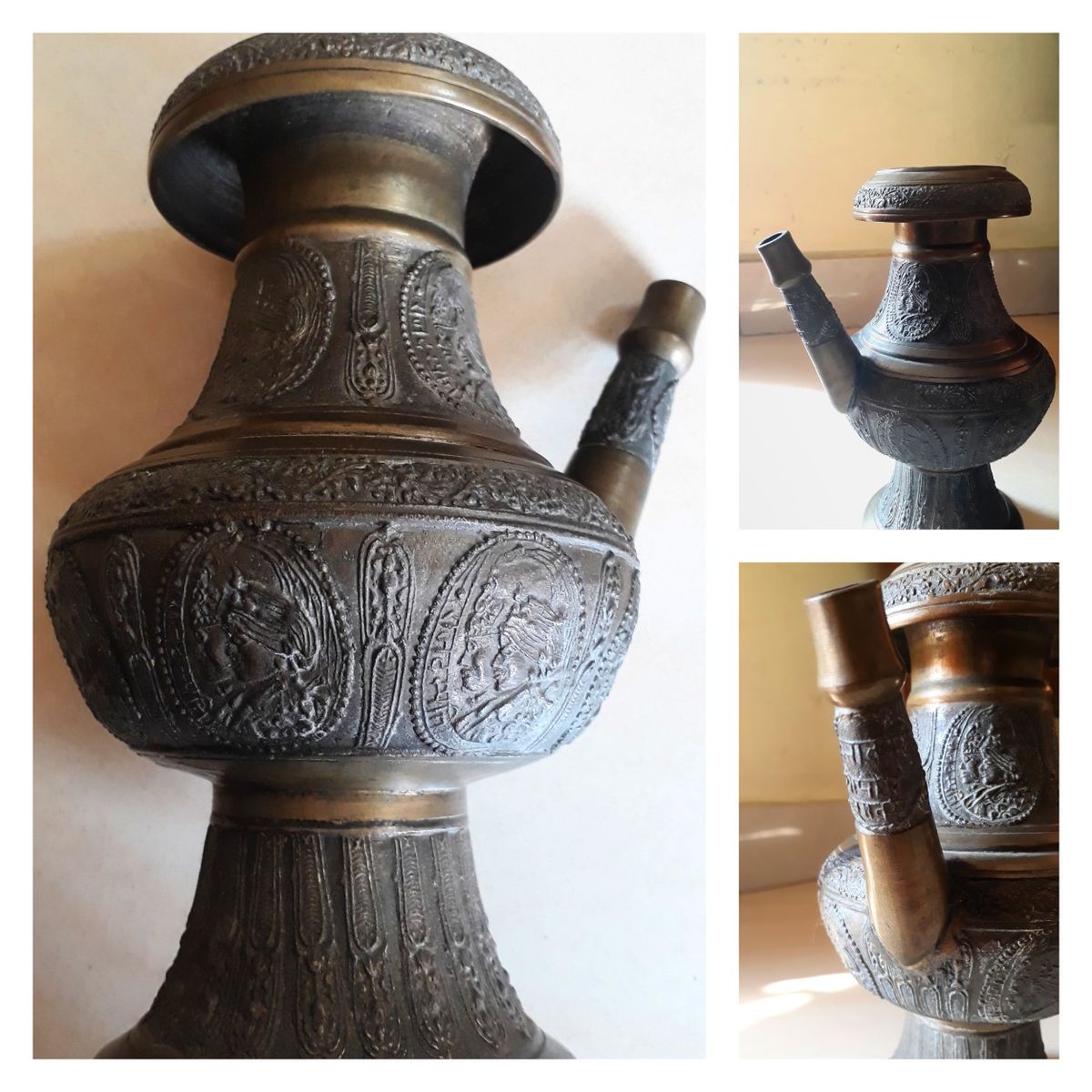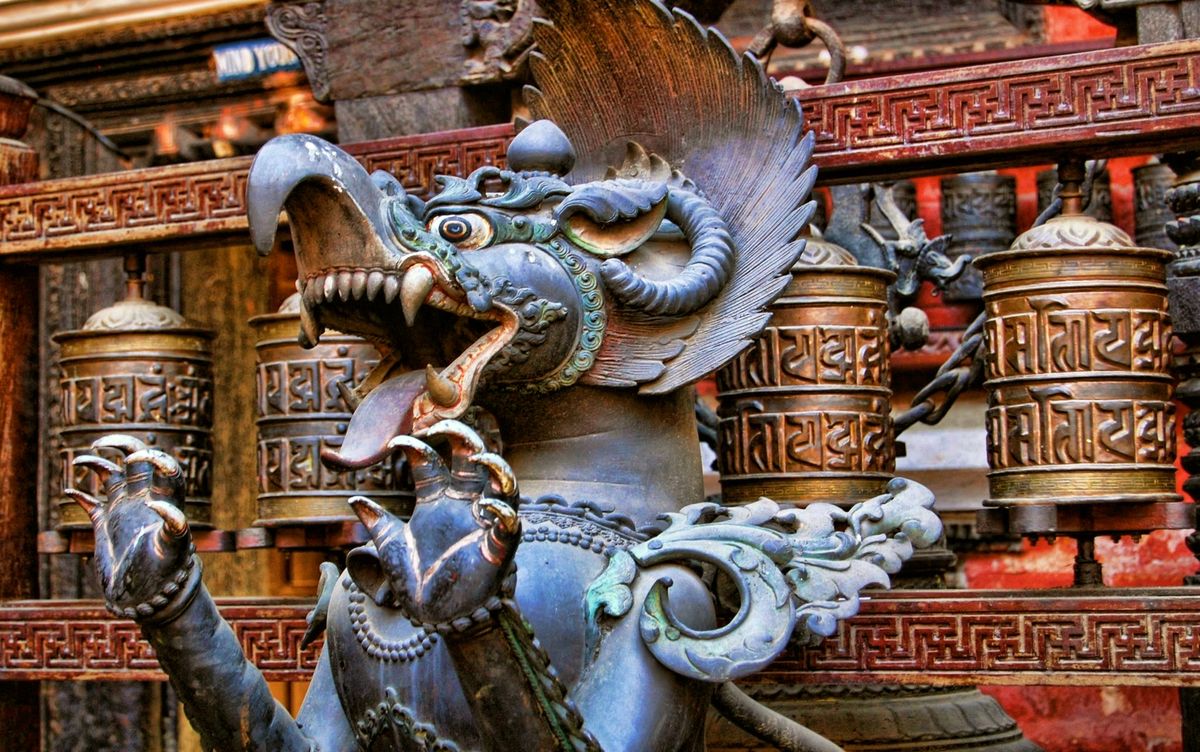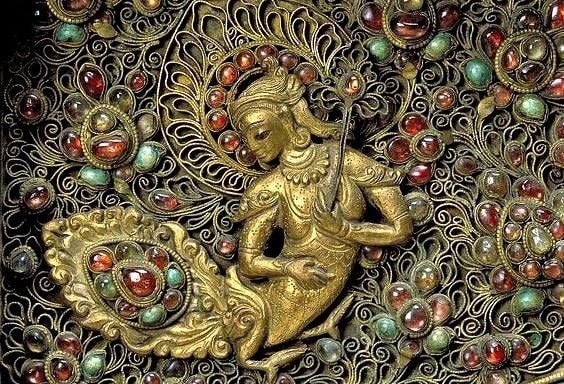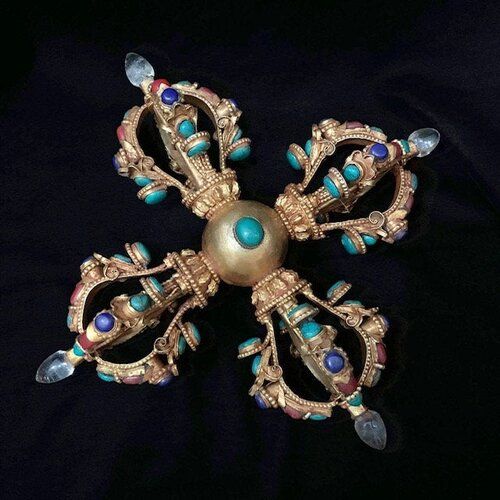Nepal's Traditional Crafts
Nepal’s cultural identity is deeply rooted in its traditional crafts, with woodcarving and metalwork standing out as two of the most celebrated art forms. From intricately carved temple doors to gilded statues of deities, these crafts represent centuries of skill, devotion, and artistry. Passed down through generations, master artisans continue to preserve these practices, blending spiritual symbolism with creative expression. For travelers, exploring workshops, heritage sites, and local markets reveals not just beautiful objects but also the stories and traditions that make them timeless treasures of Nepal.

The Art of Woodcarving
Woodcarving in Nepal is both a craft and a spiritual practice. Ancient temples and palaces in the Kathmandu Valley are adorned with carved windows, struts, and doors that depict mythological figures, celestial beings, and protective deities. The famous Peacock Window in Bhaktapur is a perfect example of this artistry. Artisans use traditional tools and local hardwoods to create intricate designs that reflect both religious symbolism and cultural aesthetics. Today, woodcarvers continue to produce fine works—from household items to architectural masterpieces—ensuring the craft remains an essential part of Nepal’s cultural heritage.
Mastery of Metalwork
Metalwork in Nepal is equally revered, particularly in religious and ceremonial contexts. Skilled artisans craft statues of Buddha, Hindu deities, ritual vessels, and sacred ornaments using techniques such as casting, repoussé, and gilding. Patan, in the Kathmandu Valley, is especially renowned for its bronze and copper statues, many of which are exported worldwide as icons of Nepalese craftsmanship. The blend of precision, symbolism, and devotion makes Nepal’s metalwork not just art, but also a spiritual offering that continues to inspire travelers and collectors alike.


Where to Experience Nepal’s Crafts
Travelers can witness Nepal’s traditional crafts firsthand in the heritage cities of Kathmandu, Patan, and Bhaktapur. Walking through local markets, visitors encounter stalls filled with carved masks, prayer wheels, and handcrafted jewelry. Workshops and artisan studios often welcome guests to observe or even try their hand at these crafts. Festivals and cultural fairs also showcase traditional artistry, offering a vibrant platform to appreciate the dedication of local craftsmen. Purchasing directly from artisans supports cultural preservation while giving travelers a meaningful connection to Nepal’s heritage.

Modern Adaptations & Cultural Value
While deeply rooted in tradition, Nepalese crafts are also evolving. Today, artisans blend traditional techniques with contemporary designs, creating works that appeal to both locals and global markets. From home décor to jewelry and sculptures, these crafts continue to carry cultural value while adapting to modern tastes. By maintaining age-old methods while innovating, Nepal’s woodcarving and metalwork remain both timeless and relevant. For travelers, bringing home such creations means carrying a piece of Nepal’s culture, history, and artistry.

FAQ – Traditional Crafts of Nepal
1. Why are woodcarving and metalwork important in Nepal?
They represent centuries-old traditions, often tied to religious symbolism, and are central to the country’s cultural and artistic identity.
2. Where can travelers see the best examples of these crafts?
Kathmandu, Patan, and Bhaktapur are the main hubs, with historic temples, museums, and artisan workshops showcasing masterful works.
3. Can visitors buy authentic traditional crafts?
Yes, authentic pieces are available in heritage markets, galleries, and directly from artisans. Buying from local workshops ensures authenticity.
4. Are these crafts still practiced today?
Absolutely. Artisans continue to pass down their skills, producing both traditional and modern designs for cultural preservation and global appreciation.
5. Can travelers participate in workshops?
Some studios and cultural centers offer short workshops where visitors can learn basic carving or metalworking techniques.
6. What makes Nepal’s crafts unique?
The fusion of artistry and spirituality—each piece often carries religious or cultural symbolism, making it more than just decorative art.
7. Are these crafts linked to religion?
Yes. Many wood and metal pieces are created for temples, rituals, and spiritual practices, blending art with devotion.
8. Is bargaining acceptable when buying crafts?
Bargaining is common in local markets, but it’s recommended to pay fair prices, especially when buying from artisans directly.
9. Do artisans make modern designs too?
Yes, artisans create both traditional religious pieces and modern adaptations like jewelry, décor, and small sculptures.
10. How can travelers support Nepal’s artisans?
By purchasing authentic crafts directly from workshops, joining cultural tours, and promoting sustainable tourism that values heritage preservation.
Explore Nepal's Heritage: A Cultural Journey into Woodcarving and Metalwork
Exploring Nepal’s traditional crafts is like stepping into the living history of the Himalayas. From the intricate windows of Bhaktapur to the sacred statues of Patan, each piece reflects devotion, artistry, and cultural pride. For travelers, meeting artisans, joining workshops, and purchasing authentic creations provide a deeper connection to Nepal’s heritage. Let Namonepal.com be your guide to these timeless traditions. Plan your cultural journey today and discover how Nepal’s woodcarving and metalwork transform everyday objects into works of sacred art.
